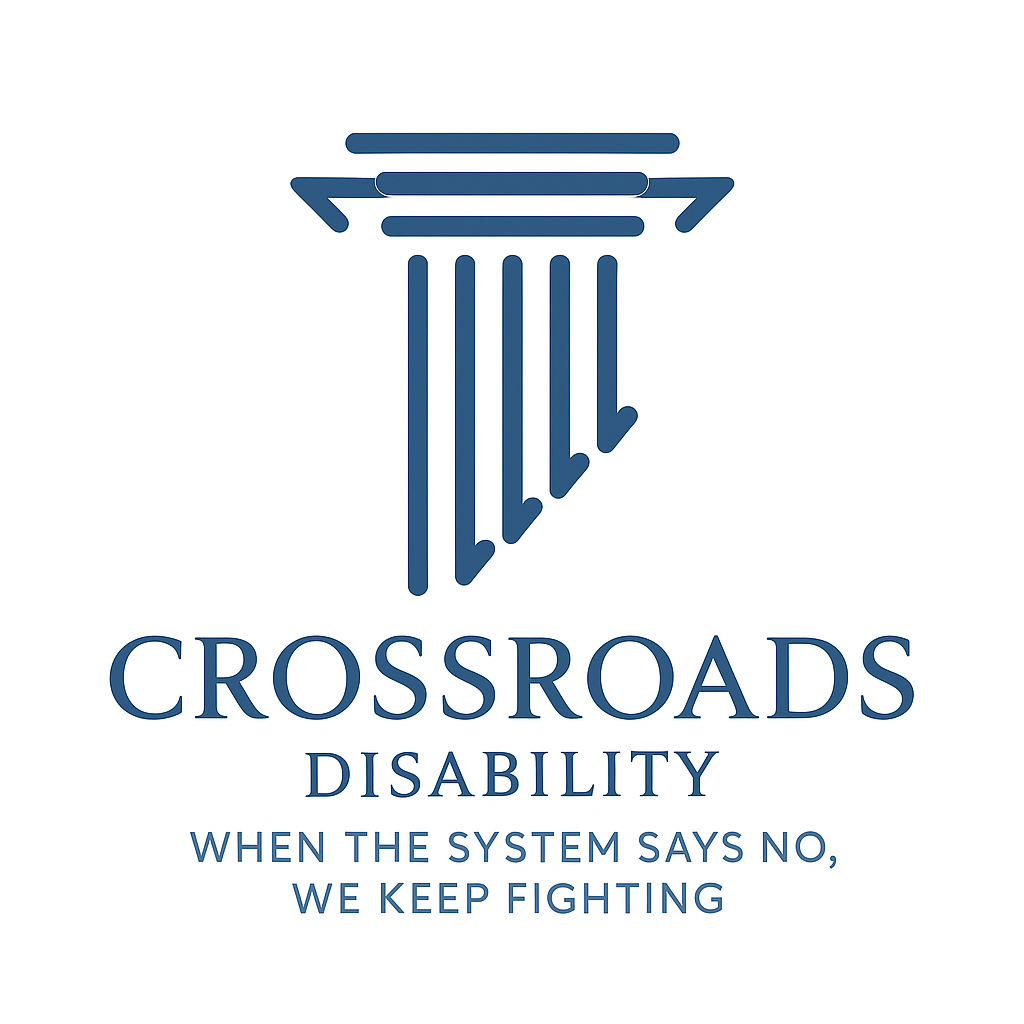What Is a Residual Functional Capacity (RFC)?
What is an RFC?

When you apply for Social Security Disability benefits (SSDI or SSI), one of the most important factors in your case is your Residual Functional Capacity, often called RFC.
The RFC is how the Social Security Administration (SSA) decides what kind of work, if any, you can still do despite your medical conditions.
It’s not just about your diagnosis — it’s about your
functional limits in the real world.
At Crossroads Disability, we help clients throughout Indiana understand and strengthen this critical part of their disability claim.
⚖️ What Does “Residual Functional Capacity” Mean?
Your Residual Functional Capacity is an assessment of your maximum ability to work given your medical limitations.
SSA looks at all your physical, mental, and sensory limitations and asks:
“What can this person still do, 8 hours a day, 5 days a week, on a regular basis?”
The RFC is the bridge between your medical evidence and the final disability decision.
🩺 How SSA Determines Your RFC
SSA doesn’t just rely on what you say about your limitations — they base your RFC on medical evidence, doctor opinions, and function reports.
They review:
- Doctor treatment notes and test results
- Hospital and specialist records
- Statements from your treating doctors
- SSA’s consultative examination reports
- Your own descriptions of daily activities (walking, lifting, concentrating, etc.)
Then, a Disability Determination Services (DDS) examiner and medical consultant assign an RFC rating.
💪 Physical RFC
A physical residual functional capacity (RFC) describes how much physical activity you can still do despite your medical conditions. Social Security uses this assessment to determine the level of work you could perform — if any — on a regular, full-time basis.
Generally, SSA classifies physical RFCs into five categories: sedentary, light, medium, heavy, and very heavy work.
- A sedentary RFC means you can lift no more than about ten pounds at a time and spend most of your day sitting, with only limited standing or walking. These are typically desk-type jobs.
- A light RFC means you can lift up to twenty pounds occasionally and spend much of the day standing or walking. Examples include cashier or mail clerk positions.
- A medium RFC allows for lifting up to fifty pounds occasionally, frequent bending, and standing — such as warehouse or construction jobs.
- A heavy RFC indicates the ability to lift up to one hundred pounds, often involving physically demanding labor.
- Finally, a very heavy RFC applies to those who can lift more than one hundred pounds regularly — jobs that are extremely strenuous and uncommon.
If your doctors and medical records show that you cannot even perform sedentary work, that usually means your limitations are significant enough for SSA to find you disabled under their rules.
🧠 Mental RFC
A mental RFC looks at your ability to:
- Understand, remember, and carry out instructions
- Maintain concentration and pace
- Interact with others appropriately
- Handle stress, attendance, and decision-making
If you struggle with depression, anxiety, PTSD, or other mental conditions, a mental RFC can be the deciding factor in your claim.
🧩 Why the RFC Is So Important
The RFC determines what jobs, if any, SSA thinks you can still perform.
For example:
- If your RFC limits you to sedentary work and you’re over age 50, SSA’s “Grid Rules” may automatically qualify you for disability.
- If your RFC shows you can do light or medium work, SSA may deny your claim, saying there are jobs available.
In other words, the RFC is where your case is won or lost.
📝 How to Strengthen Your RFC
Here’s what makes a strong RFC assessment:
- Consistent medical treatment: Regular doctor visits build credibility.
- Detailed medical opinions: Ask your treating doctor to complete a Residual Functional Capacity form (sometimes called an “RFC questionnaire”).
- Accurate self-reporting: Be honest and specific about your daily struggles — how long you can sit, stand, lift, or focus.
- Legal representation: Your attorney can identify inconsistencies, gather stronger evidence, and argue that SSA’s assigned RFC doesn’t match your true limitations.
🤝 How Crossroads Disability Can Help
At Crossroads Disability, we help clients gather the right evidence and develop supportive RFC statements from their doctors.
We understand how to show SSA that your limitations prevent full-time work — and we fight to make sure your RFC reflects the reality of your condition.
If you’ve been denied disability benefits or are applying for the first time, we can help you build a stronger case.
👉 Click here to request a free consultation.
📞 Or
click here to call Crossroads Disability today to get started.










